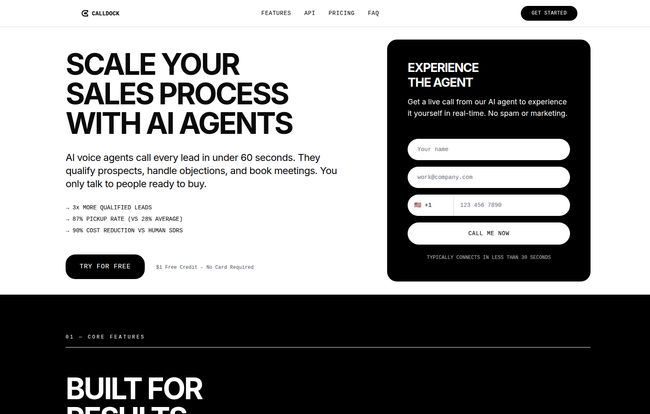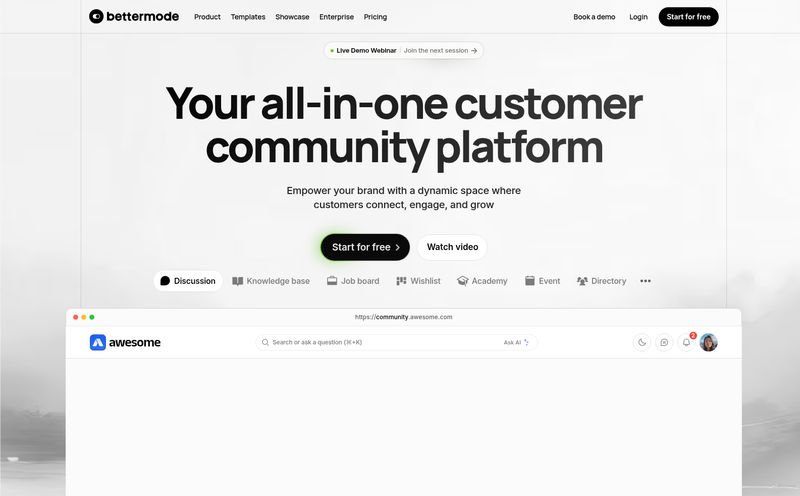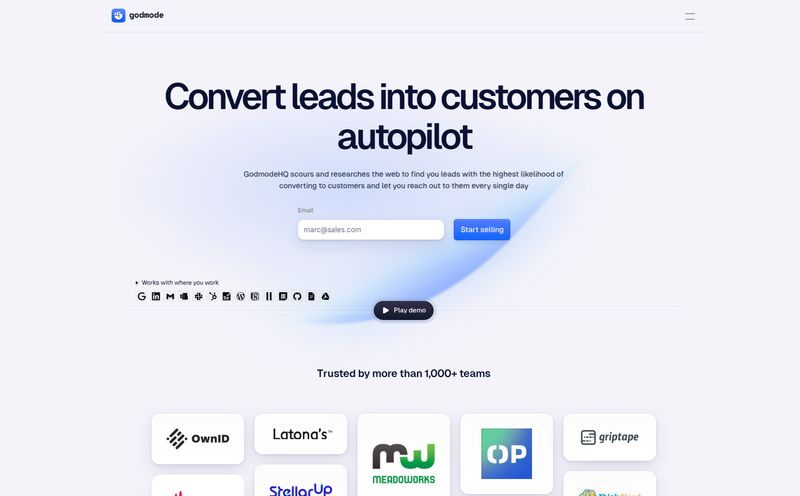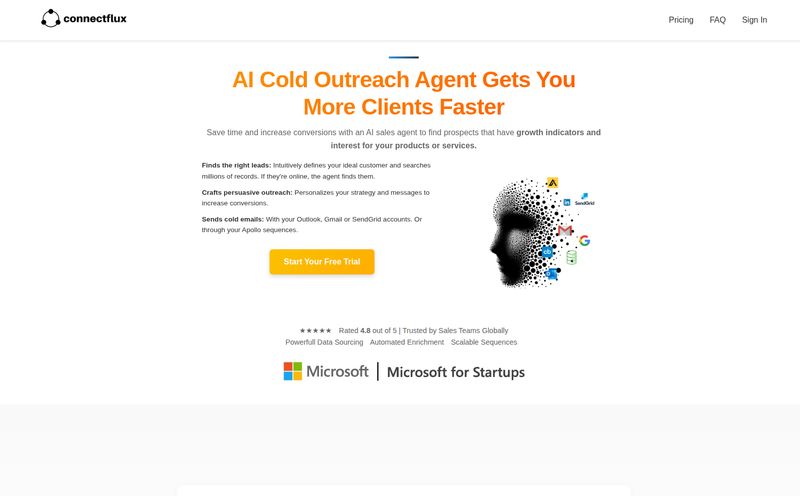Alright, let’s have a real chat. In the world of SEO and traffic generation, we obsess over getting eyeballs on our websites. We build funnels, optimize landing pages, and pour money into CPC campaigns. But what happens the second a potential customer fills out that “Contact Us” form? Crickets. A slow, agonizing silence.
We’ve all heard the stats. The classic one from a few years back by Harvard Business Review about the dramatic drop-off in lead qualification after just five minutes. Five minutes! In internet time, that’s an eternity. The lead has already moved on, opened another tab, and is probably looking at your competitor. It's a leaky bucket that costs businesses a fortune.
For years, the solution was to throw more people at the problem. Hire more Sales Development Reps (SDRs), set up complex round-robin assignments, and pray someone picks up the phone fast enough. It’s expensive, it’s messy, and honestly, it’s not always effective. So when I stumbled upon a tool called Calldock, my professional curiosity was definitely piqued. An AI that calls your leads instantly? Sounds like science fiction, but I had to see it for myself.

Visit Calldock
So, What is Calldock, Really?
Let's cut through the jargon. Calldock is an AI voice agent platform. Think of it as a tireless, 24/7 sales development rep for your website who never needs a coffee break or a day off. When a user submits a form on your site, Calldock’s AI immediately—and I mean, immediately, like within 60 seconds—calls them.
But it's not just a robocall. This isn’t one of those annoying, pre-recorded messages. It’s a conversational AI designed to sound surprisingly human. It can qualify the lead, handle basic objections, and even book a meeting directly into your calendar. The goal is simple: engage hot leads while they're still hot, and only pass the genuinely interested, qualified people to your human sales team. It's like a bouncer for your sales pipeline, making sure only the VIPs get through.
The Core Features That Actually Matter
A tool is only as good as its features, right? Calldock has a bunch, but a few really stand out as game-changers in my book.
The Under-a-Minute Response Time
This is the headline act. The main event. The promise of calling a lead within 60 seconds of a form submission is huge. Their site boasts an 87% pickup rate, which absolutely dwarfs the industry average (which they peg at 28%). Speed wins deals. It's that simple. By connecting with someone the moment they express interest, you catch them at their peak curiosity. That immediate connection builds trust and momentum before they can even think about clicking away.
Smart Lead Qualification on Autopilot
This is where the magic really happens. Calldock isn't just about speed; it's about intelligence. The AI is designed to understand lead qualification frameworks like BANT (Budget, Authority, Need, Timeline). It listens for intent. Is this person just kicking tires? Do they have a real pain point? Are they the decision-maker? It can classify the call's purpose—be it a sales inquiry, a support request, or a pricing question—and route it accordingly. This means your sales team stops wasting time on calls that go nowhere and can focus on conversations that actually close.
A Visual Flow Builder for Us Non-Coders
I was relieved to see this. The idea of “programming” an AI conversation sounds daunting. But Calldock has a drag-and-drop visual flow builder. You can literally map out the conversation. If the user says this, then the AI should do that. If they ask about pricing, send them this email. If they’re ready to book, check the calendar. It’s all done visually, with nodes and branches. You can build and update your agent’s entire script and logic without writing a single line of code. It makes the whole process feel accessible, even for a marketer like me who runs at the sight of a command line.
Integrations That Play Nice with Others
No tool is an island. A new platform that doesn't connect to your existing stack is more of a headache than a help. Calldock gets this. It has native integrations with the big ones: Google Calendar for booking, Slack for real-time notifications (which is awesome for team visibility), and of course, Zapier. And with Zapier, you can pretty much connect it to anything. Your CRM, your project management tool, you name it. This was a big green flag for me, as it shows they understand the need to fit into an established workflow, not blow it up.
Okay, How Hard Is It to Set Up?
Calldock offers a few ways to get it running, which is smart. You can go the super-simple route and just embed their widget on your site. Copy a snippet of code, paste it in, and you’re basically done. It can be a popup, an inline form, or even trigger on exit intent.
For the more technically inclined, you can use an API trigger or a webhook flow. This gives you more control to fire calls from your own backend, CRM, or any other system when a certain event happens. It’s flexible enough for small businesses that just want a quick widget and for larger companies with custom development needs.
Let's Talk Money: The Calldock Pricing
Pricing is always the million-dollar question, isn't it? Calldock uses a straightforward, tiered model based on monthly call minutes. I appreciate the transparency here, no hidden fees or confusing credit systems.
| Plan | Price per Month | Included Minutes |
|---|---|---|
| Hobby | $49 | 120 minutes |
| Pro | $129 | 480 minutes |
| Agency | $349 | 1440 minutes |
Note: Pricing is based on the information available at the time of writing. For the most up-to-date details, it’s always best to check the official Calldock pricing page.
The Hobby plan seems perfect for a small business or a consultant just starting out. The Pro plan is likely the sweet spot for most growing companies, and the Agency plan is built for high-volume operations. The minute-based model means you do need to keep an eye on your usage, but it also means you’re paying for what you actually use.
My Honest Take: The Good and The... Cautious
No tool is perfect. Let's be real. After digging in, here's my balanced take.
On the one hand, the potential upside is massive. The ability to instantly engage leads, increase conversions, and free up your support and sales staff is a huge win. The call analytics, recordings, and transcripts provide incredible insight into what your customers are actually asking for. For a data nerd like me, that’s gold. It’s not just a sales tool; it's a market research machine.
On the other hand, there are some things to keep in mind. As of now, it seems the voice agents are English-only. This is a big consideration for international companies, though I wouldn't be surprised if more languages are on their roadmap. Also, because pricing is minute-based, you’ll want to have your qualification flow dialed in to avoid chewing through minutes on unproductive calls. And finally, while the AI is impressive, there will always be complex, nuanced situations where a human touch is irreplaceable. It's a powerful tool, not a full replacement for a human team.
Frequently Asked Questions About Calldock
Will prospects know they’re talking to an AI?
Calldock says its AI is designed to be conversational and human-like. However, transparency is usually the best policy. Many users choose to have the AI introduce itself as a virtual assistant. It sets the right expectation and, frankly, most people are pretty comfortable with it these days.
What happens if a lead doesn't answer the call?
The system is smart enough to handle this. You can configure follow-up logic in the flow builder, like sending an automated text message or email, or scheduling another call attempt at a later time. You don't just get one shot.
How does this compare to just hiring more SDRs?
Cost and consistency. An AI agent is a fraction of the cost of a human SDR's salary. It works 24/7/365 without fail, never has a bad day, and follows the script perfectly every single time. It's designed to handle the high-volume, repetitive work of initial contact and qualification, freeing up your human SDRs for high-value closing activities.
Can the AI handle complex objections?
It can handle common, predictable objections that you program into its flow. For truly complex or unexpected questions, the best practice is to program a seamless handoff. The AI can say something like, "That's a great question, let me get you over to a specialist who can answer that in detail," and then transfer the call to a human.
Is Calldock a Must-Have Tool?
So, the final verdict. Is Calldock worth it?
In my experience, if your business relies on inbound leads from your website, the single biggest lever you can pull to increase sales is to shorten your response time. It's more impactful than changing the color of a button or tweaking your headline. It's fundamental.
Calldock directly addresses this fundamental problem with a solution that is elegant, powerful, and surprisingly easy to implement. It won't replace your entire sales team, and it's not supposed to. Its job is to be the perfect front line—the tireless, efficient, instant responder that ensures no hot lead ever goes cold again. If you're tired of watching leads slip through the cracks, this is one of the most interesting tools I've seen in a long time. It might just be the missing peice in your sales process.
Reference and Sources
- Calldock Official Website
- Calldock Pricing Information
- Harvard Business Review - The Short Life of Online Sales Leads



